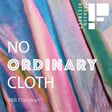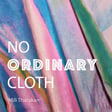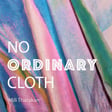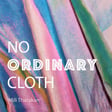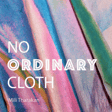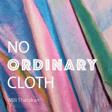
Ep 4. Unboxing Science to Make Future Fabrics with Anastasia Pistofidou
Whether you are a textile designer, biologist, engineer, architect, fashion designer, material scientist or a curious maker - we all need to come together to innovate and solve challenges the world is facing today.
On this episode our guest speaker Anastasia Pistofidou has done just that - she has created an ecosystem that brings together diverse expertise to explore textiles and solve some of these challenges.
Trained as an architect, Anastasia meanders into the world of textiles through soft architecture, where she began to take knowledge and tools from her architectural background and apply them to the textile field to create new materials and ideas. She is a passionate educator and maker at heart. Anastasia's story is about the merging of creativity, sustainability, and technological advancement inspiring a new wave of textile education and industry practices.
With a mission to make science more accessible to everyone, she co-founded the open-source educational program, Fabricademy, where students from diverse walks of life (and aged anywhere between 16-65) come together to learn and innovate at the intersection of textiles, biology and digital fabrication. All are welcome to this program that fosters community engagement, promote peer-to-peer learning and collaborations worldwide. What you learn here is beyond conventional fashion education, it breeds new knowledge, equipping learners to challenge the fast-fashion industry's status quo.
Listen in as Anastasia highlights the 3 key skills she hopes her students would take away to drive an innovative and sustainable career, and sheds light on the future of education and what she would do if she had a magic wand.
Anastasia also discusses her views on AI, it’s role in creating and collaborating, as well as her current projects and provides a range of resources on emerging textiles for further learning and inspiration. Find the links below to some of these fabulous resources.
If you would like to get your hands messy and explore emerging textile fields such as e-textiles, bio-fabrication of materials, soft robotics, digital fabrication, wearables, skin electronics, check out Fabricademy program and start exploring today.
Fabricademy website
Program - course info
Insta - @fabricademy
Resources:
Entangled Life book
Biofabrication: From Fungi to Fashion podcast
Next Generation Material podcast
Abstract: The Art of Design Netflix series
Life in Colour Netflix series
Ellen McArthur Foundation - Circular Economy
Connect with Mili Tharakan:
Insta: @noordinarycloth
